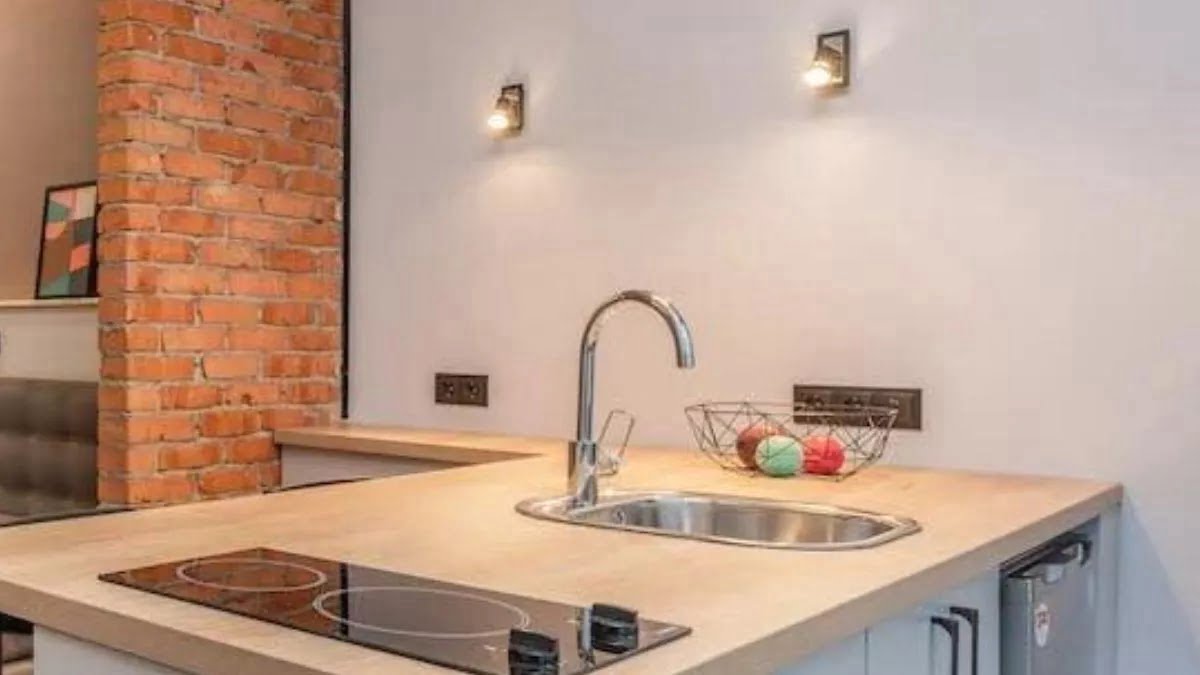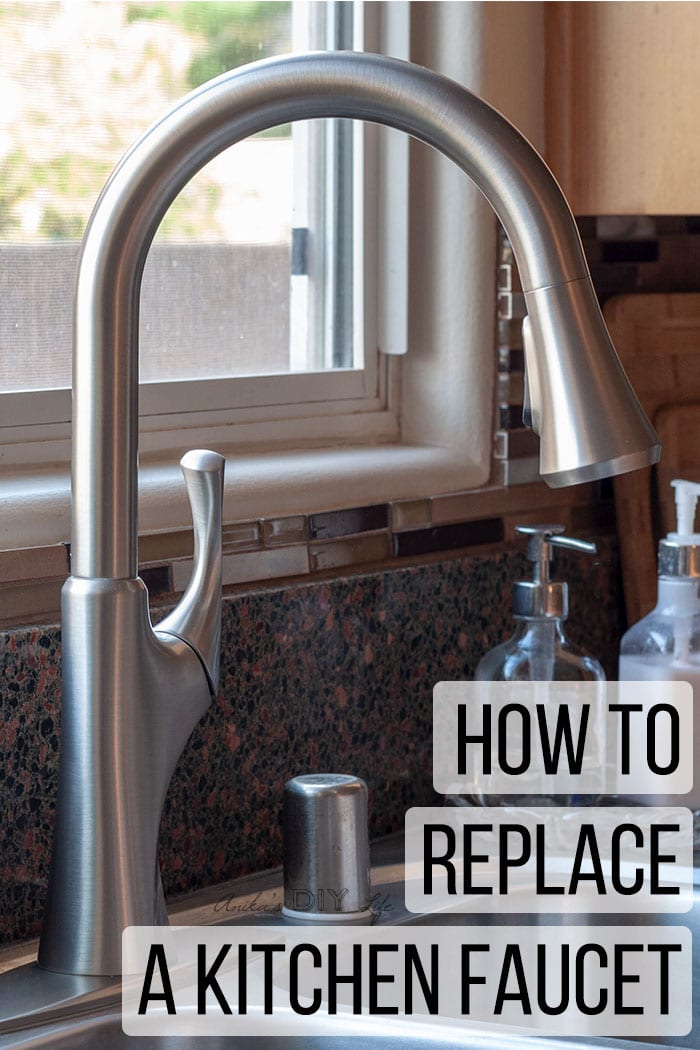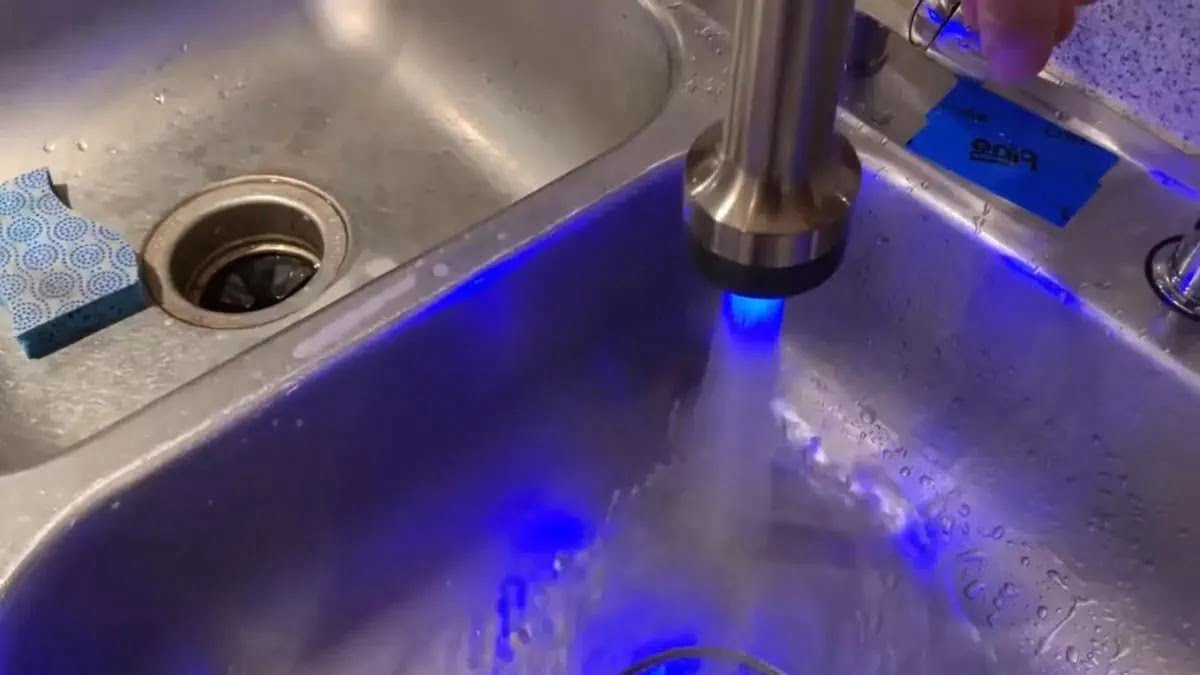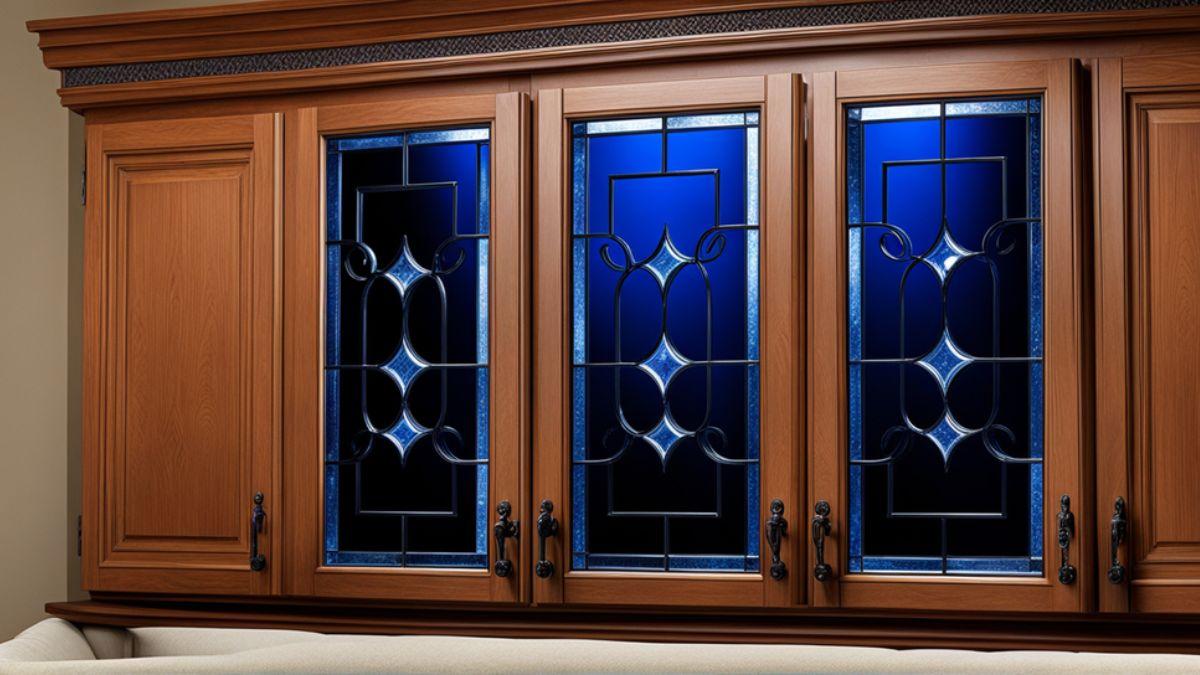
We may earn money or products from the companies mentioned in this post.
Installing a Pfister kitchen faucet involves a straightforward process that can be easily accomplished. We will provide you with a step-by-step guide to help you successfully install your Pfister kitchen faucet and enhance the functionality of your kitchen.
From gathering the necessary tools to connecting the water lines, we will cover all the essential steps to ensure a proper installation. By following the instructions in this guide, you can have your new Pfister kitchen faucet up and running in no time.
Let’s get started!

Credit: www.anikasdiylife.com
Gather Your Tools And Materials.
Gather all necessary tools and materials for a seamless installation of your Pfister Kitchen Faucet. Ensure a successful project by having everything ready at hand.
Gather Your Tools And Materials:
To ensure a smooth and efficient installation process for your Pfister kitchen faucet, it is essential to gather all the necessary tools and materials beforehand. Here’s a quick checklist to get you started:
- Adjustable wrench: This versatile tool will enable you to tighten and loosen various connections during the installation process.
- Screwdriver: You’ll need a screwdriver to remove any existing faucet components and secure the new ones.
- Pliers: These will come in handy for gripping and turning small nuts and bolts.
- Bucket or towel: Have a bucket or towel nearby to catch any water that may leak during the installation.
- Plumber’s tape: Also known as Teflon tape, this thin white tape helps create a watertight seal on threaded connections.
- Pfister kitchen faucet: Of course, you’ll need the new faucet itself! Ensure you have all the components and instructions that come with it.
- New supply lines: Depending on the age of your existing faucet, you might want to consider replacing your supply lines for optimal performance and durability.
- Safety goggles and gloves: It’s always a good idea to protect your eyes and hands during any plumbing project.
By having all these tools and materials prepared before you start, you’ll save time and reduce the likelihood of encountering unexpected difficulties. Now that you’ve gathered everything you need, let’s move on to the next step in installing your Pfister kitchen faucet.
Turn Off The Water Supply To The Faucet.
To install a Pfister kitchen faucet, simply remember to turn off the water supply to the faucet before starting the installation process. Enjoy smooth and hassle-free installation!
Before you begin installing your Pfister kitchen faucet, it is important to turn off the water supply. This ensures that you won’t have any water leaking or spraying while you work. Follow these steps to turn off the water supply:
- Locate the shut-off valves underneath your sink. These are typically found near the back wall or on the pipes leading to the faucet.
- Turn the valve clockwise until it is fully closed. This will cut off the water supply to the faucet.
- To double-check that the water is off, turn on the faucet and see if any water comes out. If it does, go back and make sure the shut-off valve is completely closed.
Remember, turning off the water supply is an important step to prevent any potential water damage or accidents while installing your new Pfister kitchen faucet.
Remove The Old Faucet.
Remove the old faucet easily and effortlessly before installing the Pfister Kitchen Faucet. Simplify the process with these easy steps for a seamless upgrade.
Removing The Old Faucet
When it comes time to upgrade your kitchen faucet, removing the old one is the first step to take. The process may seem daunting, but with the right tools and a little know-how, it can be a straightforward task. Follow these steps to remove your old Pfister kitchen faucet and make way for the new one:
- Turn Off the Water Supply: Locate the shut-off valves under the sink and turn them clockwise to shut off the water supply. If you don’t have individual shut-off valves, you’ll need to shut off the main water supply for your entire house.
- Disconnect the Supply Lines: Use an adjustable wrench to loosen and disconnect the supply lines from both hot and cold water valves. Be prepared for a small amount of water to come out when you disconnect the lines.
- Remove the Nut: Underneath the sink, locate the nut that secures the faucet to the sink or countertop. Use a basin wrench or a pair of adjustable pliers to loosen and remove the nut. Depending on the type of faucet you have, there may be additional nuts to remove.
- Detach the Faucet: Once the nut is removed, carefully lift the old faucet out of the sink or countertop. Be cautious of any water or debris that may be trapped underneath.
- Clean the Area: Take this opportunity to clean the area where the old faucet was installed. Remove any residue or build-up using a mild cleaning agent or vinegar solution. This will ensure a clean surface for the installation of your new Pfister kitchen faucet.
Removing an old faucet is a necessary step when installing a new one. By following these steps and taking your time, you’ll be able to remove the old faucet with ease and make way for the sleek and functional Pfister faucet of your dreams.
Inspect The Mounting Holes And Gaskets.
Inspecting the mounting holes and gaskets is an essential step in installing a Pfister kitchen faucet. It ensures a proper fit and prevents leaks, ensuring a smooth and functional installation process.
Inspect The Mounting Holes And Gaskets
Before installing your Pfister kitchen faucet, it’s important to inspect the mounting holes and gaskets to ensure a secure and leak-free installation. Here are a few key points to keep in mind:
- Check the mounting holes: Examine the sink to ensure that the mounting holes align with the faucet you are installing. Measure the distance between the holes to ensure compatibility. This step is crucial to ensure a proper fit.
- Inspect the gaskets: Locate the gaskets that came with your Pfister kitchen faucet. These gaskets are essential for creating a watertight seal between the faucet and the sink. Ensure that the gaskets are free from any damage or defects that could compromise the installation.
- Clean the mounting surface: Before you begin the installation process, thoroughly clean the mounting surface to remove any debris or residue that may interfere with the proper seating of the faucet. A clean surface will help create a secure connection and prevent leaks.
- Ensure a snug fit: When installing the faucet, make sure that the mounting holes align perfectly with the gaskets. Apply gentle pressure to snugly fit the faucet into place. Avoid overtightening, as this can damage the gaskets and cause leaks.
- Check for leaks: Once the faucet is securely installed, turn on the water supply to check for any signs of leaks. Carefully inspect the area around the mounting holes and gaskets for any water seepage. If you notice any leaks, immediately address the issue by readjusting the faucet or replacing any damaged gaskets.
By thoroughly inspecting the mounting holes and gaskets before installation, you can ensure a smooth and trouble-free process. Taking these steps will result in a properly seated faucet that will provide reliable performance and leak-free operation in your kitchen.
Install The New Faucet.
Learn how to easily install your new Pfister kitchen faucet with this step-by-step guide. Upgrade your kitchen in no time!
Install The New Faucet
Installing a new Pfister kitchen faucet may seem daunting at first, but with the right tools and instructions, it can be a straightforward process. Here’s how you can install your new faucet:
Gather The Necessary Tools And Materials:
- Adjustable wrench
- Plumber’s tape
- Bucket or towel to catch water
- New Pfister kitchen faucet
- Safety goggles
- Gloves (optional)
Prepare The Workspace:
Before you begin the installation process, it’s important to prepare your workspace to avoid any accidents or damage. Follow these steps:
- Clear the area around your sink, removing any items or clutter that could get in the way.
- Place a towel or bucket underneath the sink to catch any water that may spill during the installation process.
- Wear safety goggles to protect your eyes from any debris that may come loose during the installation.
Remove The Old Faucet:
Now that you have prepared the workspace, it’s time to remove the old faucet. Follow these steps:
- Turn off the water supply valves underneath the sink. You may need to use adjustable pliers to do this.
- Disconnect the supply lines that connect the faucet to the water supply, using the adjustable wrench.
- Loosen the nuts that hold the faucet in place. You may need to use a basin wrench for hard-to-reach areas.
- Carefully remove the old faucet, taking note of any accessories or components that may need to be replaced or reused.
Prepare The New Faucet:
Before installing the new Pfister kitchen faucet, take a moment to prepare it by following these steps:
- Read the manufacturer’s instructions that come with the faucet. Familiarize yourself with the components and any specific instructions for your model.
- Apply the plumber’s tape to the threaded fittings of the new faucet. This will help create a watertight seal.
Install The New Faucet:
With the old faucet removed and the new one prepared, you’re ready to install the new Pfister kitchen faucet. Follow these steps:
- Position the new faucet over the mounting holes on the sink.
- Thread the supply lines through the holes and connect them to the corresponding water supply valves. Use an adjustable wrench to tighten the fittings securely.
- Tighten the nuts underneath the sink to hold the faucet in place. Ensure that the faucet is properly aligned and level.
- Turn on the water supply valves slowly to check for any leaks. If you spot any leaks, tighten the fittings or connections as necessary.
- Once you have confirmed that there are no leaks, turn on the faucet and check for proper water flow.
Congratulations! You have successfully installed your new Pfister kitchen faucet. Enjoy the convenience and functionality it brings to your kitchen. Remember to refer back to the manufacturer’s instructions for any specific maintenance or troubleshooting in the future.
Turn On The Water Supply And Test The Faucet.
To install a Pfister Kitchen Faucet, simply turn on the water supply and test the faucet for proper functionality. Ensure a seamless installation by following these easy steps.
Turn On The Water Supply And Test The Faucet
Installing a Pfister kitchen faucet is an exciting step in upgrading your kitchen. After successfully installing the faucet, it’s time to turn on the water supply and test the faucet’s functionality. Here’s what you need to do:
- Turn on the water supply valves: Locate the shut-off valves beneath the sink and turn them counterclockwise to open the water supply fully. This will allow water to flow through the faucet.
- Test the hot water: Turn the faucet handle to the hot water side and let it run for a few seconds. Check for any leaks or drips around the handle or base of the faucet.
- Test the cold water: Now, turn the handle to the cold water side and let the water flow. Double-check for any leaks or drips.
- Adjust the water temperature: If you have a single-handle faucet, test the ability to adjust the water temperature by moving the handle to various positions. Make sure it transitions smoothly from hot to cold.
- Check for proper water flow: Run both hot and cold water simultaneously to ensure there is a sufficient water flow rate. Check for any irregularities or fluctuations in water pressure.
Testing the faucet after installation is crucial to identify any issues or leaks early on. By following these steps, you can ensure that your Pfister kitchen faucet is in excellent working condition.
So, go ahead and turn on the water supply, test the faucet, and rejoice in the well-deserved satisfaction of successfully installing your new Pfister kitchen faucet!
Frequently Asked Questions About Installing Pfister Kitchen Faucet
How Do You Install A 3-Hole Kitchen Faucet?
To install a 3-hole kitchen faucet, follow these steps:
1. Turn off the water supply. 2. Position the faucet in the mounting holes. 3. Tighten the mounting nuts underneath using a wrench. 4. Connect the water supply lines to the faucet. 5. Turn on the water supply and test for leaks. Voila! Your 3-hole kitchen faucet is successfully installed.
How Do You Change A Single Handle Pfister Faucet Cartridge?
To change a single-handle Pfister faucet cartridge, follow these steps:
1. Shut off the water supply to the faucet. 2. Remove the handle and escutcheon plate. 3. Unscrew the cartridge retaining nut and pull out the old cartridge. 4. Insert the new cartridge, secure it with the retaining nut, and reassemble the faucet. 5. Turn on the water supply and test the faucet for any leaks.
How Do You Replace A Single Handle Kitchen Faucet Cartridge?
To replace a single-handle kitchen faucet cartridge, follow these steps:
- – Turn off the water supply. – Remove the handle and trim plate. – Unscrew the cartridge retaining nut. – Replace the old cartridge with a new one. – Secure the cartridge with the retaining nut.
- – Reassemble the handle and trim plate. – Turn on the water supply and check for leaks.
How Do You Remove A Pfister Kitchen Faucet Head?
To remove a Pfister kitchen faucet head, follow these steps:
1. Locate the locking nut underneath the faucet head. 2. Use pliers to loosen and remove the nut. 3. Gently pull the head straight up to detach it from the faucet. 4. If stuck, try twisting the head while pulling upward to release it.
Conclusion
Installing a Pfister kitchen faucet is a straightforward process that can greatly enhance your kitchen’s functionality and style. With its innovative design and durable construction, Pfister faucets are built to last and provide years of reliable use. Whether you’re replacing an old faucet or upgrading to a new one, following the manufacturer’s instructions will ensure a hassle-free installation.
Start by gathering all the necessary tools and materials, and then proceed with removing the old faucet, preparing the sink for the new faucet, and finally, installing and testing the Pfister faucet. By carefully following each step, you can have a brand-new kitchen faucet that not only complements your decor but also enhances the efficiency of your daily kitchen tasks.
Enjoy the convenience and elegance that a Pfister kitchen faucet brings to your home!






